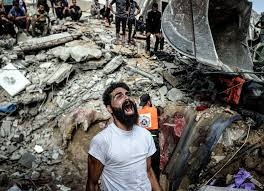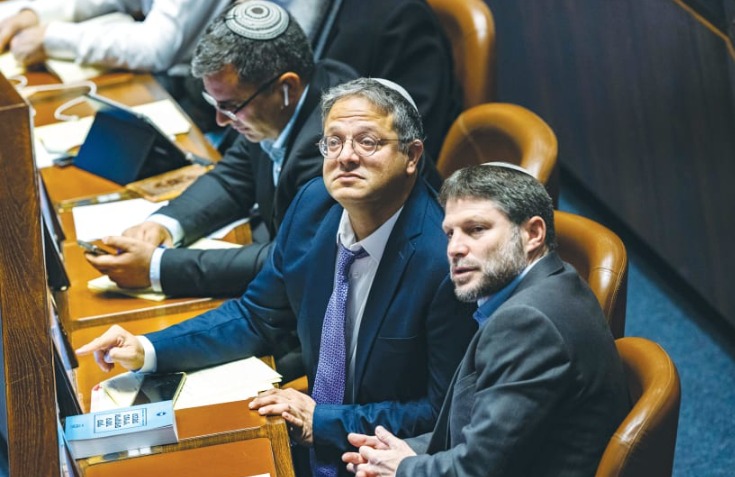Negotiations aimed at securing a ceasefire in Gaza and the release of Israeli hostages have made notable progress over the weekend, according to a senior US official familiar with the discussions taking place in Cairo. The mediators, who include representatives from the US, Egypt, and other stakeholders, have been working intensively to finalize the details of the potential agreement. These discussions have included determining the specifics of the prisoner exchanges that would form part of the pact.
Despite the advancements, there is no certainty that a final agreement will be reached immediately. The negotiators in Cairo are now focused on the “nuts and bolts” of the deal, which involves intricate details such as identifying the names of prisoners to be exchanged and addressing remaining issues.
The negotiations have been ongoing for months, with significant efforts to reconcile the demands of Israeli Prime Minister Benjamin Netanyahu and Hamas, the militant group that controls Gaza. While there are still significant sticking points, they are considered potentially surmountable by the negotiating parties.
One of the primary issues in the negotiations is the presence of the Israeli military in the Philadelphi corridor, an area along Gaza’s border with Egypt. Hamas has expressed strong opposition to Israel maintaining a military presence there during the initial phase of the ceasefire deal. The current proposal suggests an Israeli withdrawal from “densely populated areas” in Gaza, but there is ongoing debate over which parts of the Philadelphi corridor should be classified as densely populated versus unpopulated. The Israeli Defense Forces (IDF) would maintain a presence in the unpopulated areas during the first phase of the agreement.
Hamas has reiterated its demands for any agreement to include a permanent ceasefire, a full withdrawal of Israeli forces from Gaza, the right of return for residents, significant humanitarian relief, and a comprehensive exchange deal. Despite these public statements, the US official indicated that Hamas may be willing to be more flexible regarding the Israeli military’s presence in the initial phase of the agreement.
The proposed agreement is designed to deliver substantial humanitarian aid to Gaza and initiate reconstruction efforts. This includes a “huge surge of humanitarian aid” and a commitment to clear rubble and start rebuilding, which aims to provide significant relief to the people of Gaza.
US negotiators expect Hamas leader Yahya Sinwar to receive the latest proposal in the coming days, although communication challenges may affect the timing. A second US official described the Cairo talks as “constructive,” highlighting a collaborative spirit among all parties to reach a final and workable agreement. Lower-level working groups are expected to continue in the coming days to address any remaining issues and details.
In addition to the ongoing discussions in Cairo, the US and Egypt had meetings with Israel earlier in the week to narrow down the remaining gaps and clarify aspects of the bridging proposal. These meetings included bilateral talks between the US and Egypt on Friday to prepare for high-level negotiations over the weekend.
On Saturday, Qatar and Egypt engaged with senior Hamas representatives, meticulously reviewing each paragraph of the proposal to identify and resolve any remaining issues or questions.
The path to a final agreement remains complex, with significant negotiations required to address all outstanding issues. However, the progress made over the weekend has provided hope that a resolution could be within reach if the remaining challenges can be overcome.
Regional Tensions and Proxy Conflicts
The continuation of ceasefire talks in Cairo on Sunday, despite the intense exchange of fire between Israel and Hezbollah, provided a glimmer of hope amid the ongoing crisis. The skirmishes, which saw Hezbollah launching attacks that were largely repelled by Israeli forces, appeared to lessen the pressure on Israel that Hamas had hoped to leverage for additional concessions. Some US and Israeli officials believe that Hezbollah’s actions may have inadvertently diminished the negotiating power Hamas sought to gain through heightened conflict.
As negotiations proceed, the urgency to reach a deal intensifies against the grim backdrop of severe humanitarian crises in Gaza. The ongoing conflict has led to severe shortages of food, water, and medical supplies, with the situation exacerbated by Israeli military actions. According to the Gaza Ministry of Health, Israeli strikes have resulted in the deaths of at least 40,435 Palestinians and injured 93,534 others. These figures underscore the dire conditions faced by Gazans, who are experiencing mass displacement and widespread disease as a result of the conflict.
On Sunday, the Israeli military issued additional evacuation orders for the area around Deir al-Balah in central Gaza, where thousands of displaced individuals are currently seeking refuge. The new evacuations have further complicated the humanitarian situation, with a senior UN official reporting that no aid deliveries are occurring in Gaza on Monday due to security concerns. Despite these challenges, the UN has pledged to remain in Gaza, emphasizing the critical need for humanitarian assistance and seeking alternative locations from which to operate.
The humanitarian zone designated by the Israeli Defense Forces (IDF) in Gaza has been shrinking steadily. Over the past month, the IDF has reduced the size of this zone by 38%, leaving only a small portion of Gaza’s total area as a humanitarian space, according to CNN’s analysis. This reduction has further strained the already dire conditions faced by those in Gaza.
The conflict began on October 7, when Hamas launched a significant attack on southern Israel, resulting in the deaths of approximately 1,200 people and the abduction of over 250 individuals. In response, Israel initiated a comprehensive military operation in Gaza. The current situation includes 109 Israeli hostages being held in Gaza, with 36 of them feared dead, according to data from the Israeli government’s press office.
As the humanitarian crisis deepens and negotiations continue, the international community remains focused on finding a resolution that addresses both the immediate needs of those affected and the underlying issues driving the conflict.



